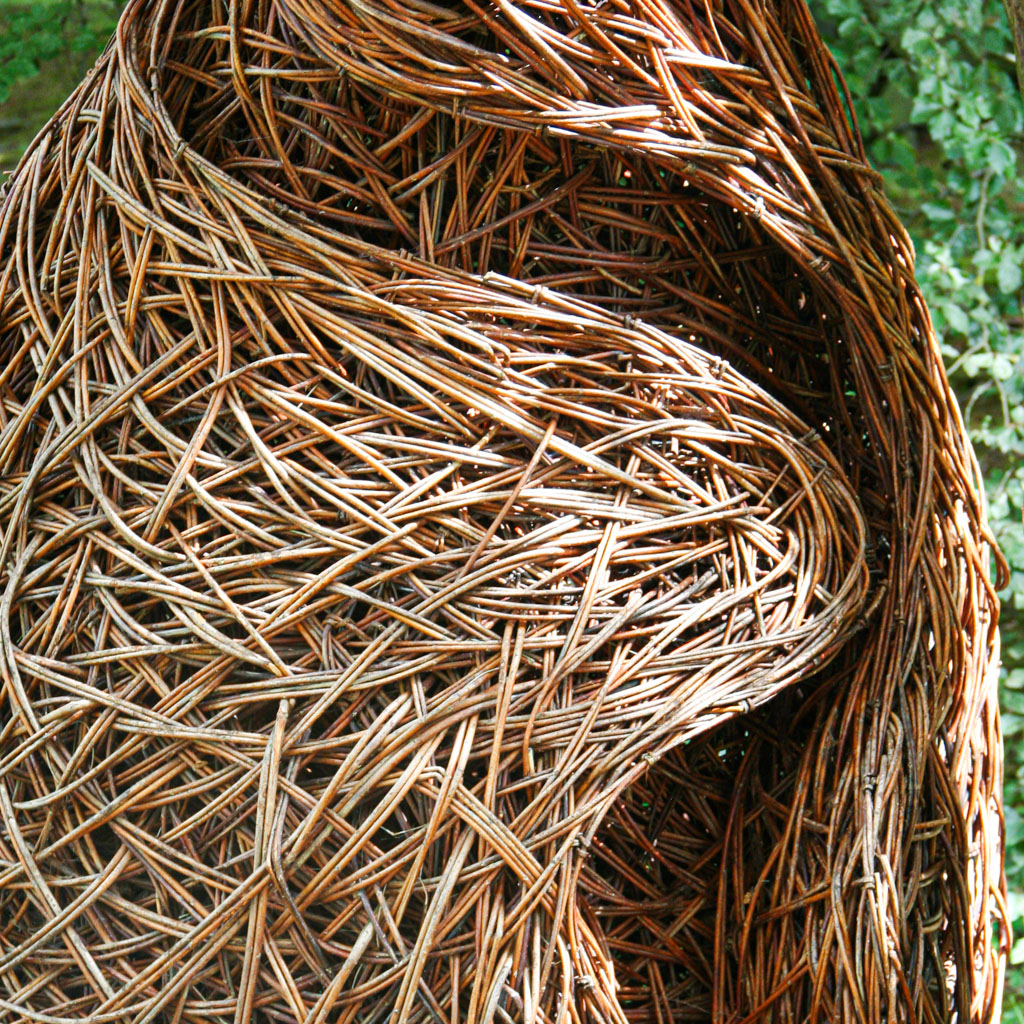I love a well woven and designed willow sculpture. They’re so sinuous, tactile and evocative. There are some incredibly talented sculptors around creating a myriad of different structures and styles. This one was elegantly draped over a small tree in Chatsworth a few years ago. They seem to like their willow sculptures there as they’ve been there on several of my visits.
Other sculptures I’ve seen have been huge and made specifically for kids to play through and explore, like a maze of tunnels; or like a domed performance space; or a giant mushroom, bee skep, apple or pear to hide in. My kids loved these when they were small – kept them busy (if not quiet!) for long enough for me to have a sit down and a coffee… who wouldn’t want one of these in their café garden at a family attraction?
I’ve seen pictures of some willow sculptures moulded to a building stretching from the eaves to the ground or hovering just off it like some giant amorphous wasp nest. A very dramatic focal point that will stop people in their tracks and talk about it, photograph it, post it.
Art is often overlooked in the landscape and gardens but it does have an important role in making a place. On a very basic level it’s something to aim for rather than aimlessly wondering about, giving people a purpose to amble and chat. It’s also a ‘thing’ that is beautiful, worthy, enlightening or other, to focus on when sitting and thinking, chatting, relaxing, or to spark conversation; or even sit on or interact with, not all art is made to just look good – some can be heard and felt. Some is permanent, some is seasonal like this willow sculpture, some is so elusive that you had to be there or view it by photo such as the land art by the likes of Andy Goldsworthy. Some antagonises its surroundings, some fits right in, some seem to be the reason for the landscape.
All in all, art in the landscape is good and we should have more of it not least to showcase the skills of our artists.

